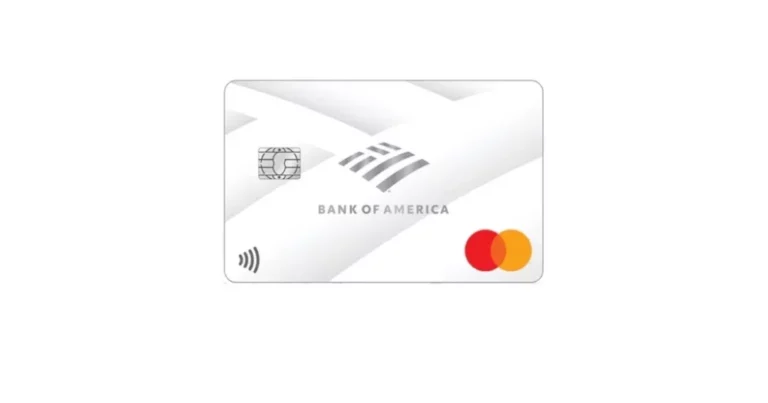How Miles-Focused Credit Cards Work and How to Maximize Them
Anúncios
Everything You Need to Know About Turning Everyday Spending into Travel Rewards
![]()
Miles-based credit cards continue to be among the most popular rewards programs in the U.S., especially among frequent flyers and travel-savvy consumers. These cards give users the opportunity to turn everyday spending into valuable travel rewards—ranging from free flights and hotel stays to luxury travel upgrades and exclusive experiences.
But even if you don’t fly often, these cards can still provide high-value benefits—as long as you understand how they work and know how to use them strategically.
Anúncios
In this comprehensive guide, we’ll explore how these cards function, how miles are earned and redeemed, and how to maximize your rewards while avoiding costly mistakes.
What Are Miles-Focused Credit Cards?
Miles credit cards are a type of rewards credit card that allows users to accumulate travel miles or points through everyday purchases. These rewards can then be redeemed for various travel-related benefits, including airline tickets, hotel stays, and upgrades.
Anúncios
There are generally two types of miles cards:
-
Co-branded cards: Issued in partnership with airlines or hotel chains (e.g., Delta, United, Marriott, Hilton).
-
General travel rewards cards: Not tied to a single brand and allow for broader redemption and point transfers.
Common Spending Categories That Earn Miles:
-
Grocery stores
-
Restaurants and takeout
-
Gas stations
-
Travel bookings (flights, hotels, car rentals)
Some cards offer a flat rate of miles on all spending, such as 2 miles per dollar spent, while others offer bonus multipliers for specific categories like dining or travel (e.g., 5x miles on flights booked through the issuer).
How Do You Earn Miles?
There are several ways to accumulate miles, depending on your card’s rewards program. Understanding how your card rewards you is essential to making the most of your everyday spending.
1. Bonus Categories
Many cards offer extra miles in high-spending categories such as:
-
Dining (e.g., 3x miles at restaurants)
-
Travel (e.g., 5x miles on flights booked directly with airlines)
-
Online shopping through partner retailers
These bonus categories can make a huge difference in how quickly you earn rewards.
💡 Tip: Review your spending habits and choose a card that rewards your most frequent categories.
2. Welcome Bonuses
Welcome or sign-up bonuses can offer significant value upfront. For example:
“Earn 60,000 miles after spending $3,000 in the first 90 days.”
This type of bonus can be worth hundreds of dollars in travel if redeemed wisely.
✅ Strategy: Time your application before a major expense (e.g., travel, appliances, home repairs) to meet the minimum spend easily without overspending.
3. Brand Partnerships
Many co-branded cards earn bonus miles when spending directly with the airline or hotel partner. For instance:
-
United MileagePlus card: Earn up to 4x miles on United purchases.
-
Hilton Honors card: Earn bonus points on Hilton hotel stays and at select restaurants.
4. Shopping Portals and Online Offers
Most issuers have online shopping portals or partner networks where you can earn bonus miles by making purchases through their referral links.
Example: Buying shoes from a partnered brand via the card issuer’s portal might earn you 10x miles.
📌 Don’t forget to activate these offers before shopping—they often require opt-in.
How Can Miles Be Redeemed?
Once you’ve accumulated miles or points, it’s time to put them to good use. Redemption values can vary widely depending on how you use your miles.
Popular Redemption Options Include:
-
Airfare: Full or partial payments for flights—often the best redemption value.
-
Cabin upgrades: Move from economy to business or first class using miles.
-
Hotel stays: Free or discounted nights at partner hotel chains.
-
Experiences: Book luxury dining, excursions, or VIP events.
-
Gift cards & merchandise: Trade points for products or store credits (usually lower value).
🔍 Pro Tip: The best redemption value typically comes from travel-related options, particularly long-haul flights or business class upgrades.
What Are the Costs to Watch Out For?
![]()
While rewards cards offer excellent perks, they also come with potential fees and interest charges. To truly benefit from miles cards, it’s crucial to understand and manage these costs.
1. Annual Fees
Many miles credit cards carry annual fees, typically ranging from $95 to $695 or more for premium cards with luxury perks.
✅ Tip: Evaluate the card’s full range of benefits (e.g., lounge access, free checked bags, travel insurance) to determine if the annual fee is worth it.
2. Interest Charges
These cards tend to carry standard or higher APRs, especially on revolving balances.
🛑 Avoid this:
To truly benefit from rewards, pay off your balance in full every month. Otherwise, interest can easily wipe out the value of any rewards earned.
3. Foreign Transaction Fees
Some travel cards charge a 3% fee on purchases made outside the U.S., which can add up quickly. However, most premium travel cards waive this fee, making them ideal for international travelers.
🧳 Check this detail before using your card abroad.
How to Choose the Right Miles Card
With so many options on the market, choosing the right miles card depends on your travel habits, brand loyalty, and personal financial goals.
Ask Yourself:
-
Do I fly often with a specific airline?
→ Consider a co-branded airline card for perks like free bags, priority boarding, and upgrades. -
Do I stay at hotels regularly?
→ Choose a hotel-branded card that offers free night certificates, bonus points, and elite status. -
Do I value flexibility?
→ Opt for a general travel rewards card that allows 1:1 point transfers to multiple airline and hotel partners.
Evaluate These Features:
-
Sign-up bonus and spend requirement
-
Earning structure (bonus categories, flat rate)
-
Point transfer partners
-
Annual fee and ongoing perks
-
Redemption ease and value
📌 Use card comparison tools to review multiple offers and choose one aligned with your lifestyle and travel goals.
Tips to Maximize Your Miles
Earning miles is only the first step—optimizing how you earn and redeem them unlocks the full value of these cards.
🔑 Best Practices:
-
Use your miles card for everyday spending in bonus categories (e.g., groceries, dining, gas).
-
Never spend more than you can afford to pay off monthly.
-
Combine your card with airline or hotel loyalty programs to earn double rewards.
-
Track limited-time offers, seasonal promos, or spending bonuses to accelerate earnings.
-
Redeem points for high-value travel like long-haul international flights or luxury hotels.
-
Use apps or travel reward websites to calculate redemption value before using your miles.
Final Thoughts

Miles-focused credit cards are one of the most powerful tools available for turning everyday spending into unforgettable travel experiences. Whether you’re chasing free flights, elite upgrades, or hotel perks, these cards can deliver significant value—if used strategically.
✈️ To make the most of your miles card:
-
Choose a card that fits your travel patterns and goals.
-
Understand the rewards structure, fees, and redemption options.
-
Spend responsibly—rewards are only valuable if you’re not carrying debt.
With smart planning, informed decisions, and consistent use, your daily purchases can become tickets to new destinations and travel experiences you’ll remember for a lifetime.
Ready to travel smarter? A well-chosen miles card could be your most rewarding travel companion in 2025—and beyond.

Post Comment